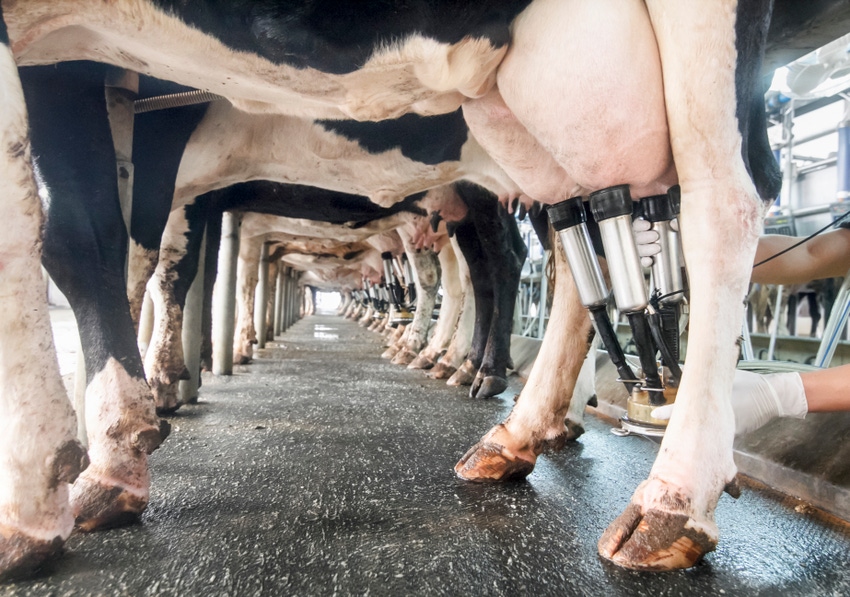During mastitis treatment, focus on infection instead of inflammation.
August 21, 2019

The standard practice on dairies has been to treat mastitis until the inflammation is gone, which is why some five-day treatment regimens have become common, according to Boehringer Ingelheim. However, treating all cases of mastitis the same way can be costly in terms of time, milk and money.
A dairy cow’s udder has a great ability to fight infection. When bacteria are introduced into the udder, the immune system responds with inflammation, which is indicated by the somatic cell count, the company said in an announcement. These somatic cells are mostly white blood cells that go to work eliminating the bacterial infection.
“A mastitis infection is caused by a pathogen, and what ensues is the signs of inflammation — whether that be simply abnormal milk or swelling of the cow’s teats and udder,” Dr. David Festa with Boehringer Ingelheim said. “The infection is usually eliminated within two days, and quite often before that.”
While the initial infection is resolved quickly either on its own or due to treatment, the clinical signs of mastitis may take four to six days to disappear. During this period, the body is eliminating the dead bacteria and the infection. Continuing to milk cows during this period will aid in flushing out dead bacteria and help reduce the clinical signs of inflammation.
“The ‘itis’ part of mastitis is the inflammation,” Festa explained. “It’s important for producers to recognize the difference between infection and inflammation; once we identify the pathogen and treat the infection, we don’t need to continue treating the signs of inflammation.”
Gram-positive bacteria are most likely to respond successfully to mastitis treatment, but in many cases, treatment may not be required at all, he added. To determine the most appropriate response to a mastitis event in a herd, Festa recommended that producers take the following into consideration:
1. The type of pathogen. Contagious pathogens like the mycoplasmas or Staphylococcus aureus are likely not to respond to treatment very well, he said. It is also important to note that studies have shown that most mild to moderate Gram-negative mastitis cases, including those caused by Escherichia coli, will self-cure without antibiotic treatment.
“Knowing your pathogen and knowing what type of mastitis you’re dealing with are critical to selecting effective treatment protocols,” Festa said.
He recommended that producers work closely with a local veterinarian or a milk quality lab that is able to return results in a timely manner. An on-farm culturing system could also be implemented to determine the types of pathogens affecting a herd. Subsequently, protocols can be developed to reduce the amount of antibiotics being used and to increase milk quality and profitability.
Of course, there are cases of mastitis that do require treatment. With targeted treatment, producers will see a better response to infections caused by Gram-positive or environmental pathogens like staphylococci and streptococci, Festa noted. When dealing with an infection that's likely to respond well to treatment, or if culturing is not a viable option, Festa recommended using short-duration mastitis therapy to eliminate the infection and reduce the length of time cows spend in the hospital pen.
2. The severity of the infection. Giving prompt attention to the health status of dairy cows always pays off.
There are several people involved on a dairy, so it’s important that the milkers -- those charged with identifying mastitis -- are also able to recognize the grades of mastitis. In a mild or moderate case, they can take a sample for culture diagnosis. With a severe case of mastitis, they should immediately notify the herdsman.
“About 15% of cows dealing with a mastitis infection will show systemic signs and become sick,” Festa said. “We need milkers to be able to identify a severe mastitis case, because a cow that is sick is going to require further treatment, supportive care and the consultation of a veterinarian.”
3. The history of the cow. Is the cow in her first lactation or her fourth? Is this her first mastitis event, or is it her second or third? It may not make economic sense to treat a cow that is not productive or has other chronic conditions, Festa suggested.
While visible abnormalities in the milk are often the first sign of mastitis, they do not determine the length of treatment. The next time a cow shows signs of mastitis, work with a local veterinarian to ensure that the proper protocols are in place to respond to the infection with appropriately targeted therapy, Boehringer Ingelheim said.
Source: Boehringer Ingelheim, which is solely responsible for the information provided and is wholly owned by the source. Informa Business Media and all its subsidiaries are not responsible for any of the content contained in this information asset.
You May Also Like


.png?width=300&auto=webp&quality=80&disable=upscale)
